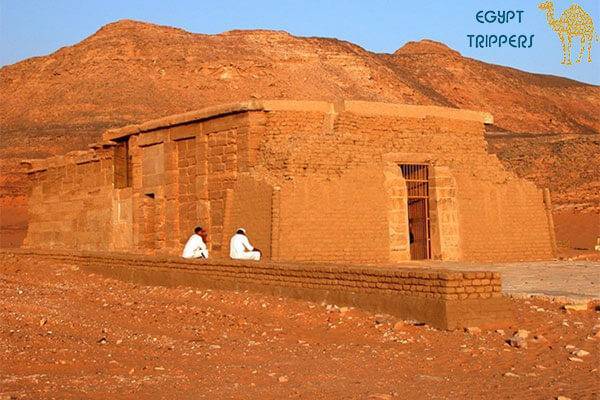It is wonderful to explore Egypt, especially the famous Amada Temple that is the oldest in the history of Nubia. Several things will intrigue you about this temple. The writings on the walls and obelisk, and the beautiful cut reliefs are some of the amazing things you will love to see.
Ruled by several great men, Amada Temple has experienced changes in lots of ways to complement every era. While on a tour to the Amada temple, you can also make plans to visit other places and enjoy a cruise in Lake Nasser, or you can choose one of our preset Aswan tours and just enjoy.
About Amada Temple
Pharaoh Thutmose III during his reign in the 18th dynasty took it upon himself to build the temple of Amada. He had a son, Amenhotep II who took over from him after his death.
In the reign of Amenhotep, a few things were added to the temple as a way of upgrading its standard and updating the decoration. After he also reigned and died, he was succeeded by Thutmose IV who made more changes to further upgrade the temple. He added a roof over the original temple’s opening and covered the forecourt.
The Temple was originally dedicated to the god “Amun” and the inscription was seen on some areas in the temple. Later, following the Amada period, an order was passed to take down the name of the god. The temple was reinstated once again with fresh improvements where more things were added to the existing Amada Temple’s structure.
Why You Should Visit Amada Temple?
The Amada Temple is a great tourist site. Surprisingly, it is not a large temple but you will be grateful you made a trip to see some very important inscriptions historically engraved in this small temple. You have probably only heard about this historically famous temple but by visiting, you will have the chance of touring Lake Nasser which is just as significant as the Amada Temple’s inscriptions.
You will have the opportunity of seeing the old engraved writings. For example, one carved on an obelisk on high walls of the temple, an inscription was made during the reign of Amenhotep II.
On the inscription, Amenhotep made a brief description of the Egyptian military movement operation into Asia where he conquered and in line with his victory hang on the wall, the bodies of the defiant chieftains whom he brought back with him.
There is more to see, as he also made inscriptions of hanging some rebels on the bow of his ship and sailed across Nubia to send a warning message to others. Another engraved writing is seen at the opening court, near the doorway. It entails the invasion of Egypt by the Libyans during the reign of Merenptah in his fourth ruling year.
What to Expect in Amada Temple

The temple is small and located in the high Dam. It is no longer dedicated to the kingdom gods Re-Horakhty and Amun-Re. The temple has passed through several changes and many things are added to suit each new reign. For example, the temple now has a hypostyle hall, which was added by Tuthmosis IV.
The temple also has an added structure of a huge and tower-like gateway made with sandstone, adjacent to the hypostyle hall. The temple is magnificent with engraved writings that will fascinate you.
The moment you walk into the temple, it feels like home. It has beautiful warm-colored features, including some fine art carvings with brilliant colors. To many, the inside of the temple is crumbling and dull while to a few, it would seem adventurous to make a tour through the Amada walls.
As you make a tour into the inner room, there are also beautifully painted artifacts. Just like the engraved writings on the walls and obelisk, almost all these paintings are made to portray Amenhotep II and Thutmose III, taking part in ritualistic activities or rendering offerings to their gods.
What to Do
Enjoy every moment of the tour in Amada Temple. You can sail across the historic Lake Nasser. The tour will be more exciting if you are with a group of other visitors. It is a brilliant idea to tour the Amada Temple with a journal where you can put down all the interesting things you will learn from visiting the temple.
You can ask your tour guide as many questions as you want and take pictures of the obelisk, engraved writings, and artifacts only if you are allowed to do so. If an inscription seems strange to you, your guide will interpret them to your understanding




Comment (0)